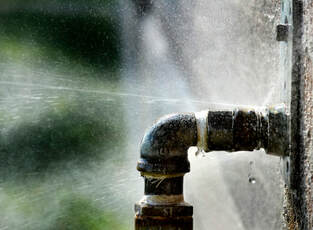6 Ways to Discover Concealed Water Leakages in Your Home
6 Ways to Discover Concealed Water Leakages in Your Home
Blog Article
We have come across this article on Finding hidden leaks down the page on the internet and thought it made good sense to share it with you on this site.

Early detection of dripping water lines can reduce a prospective disaster. Besides conserving you cash, it will lessen the aggravation and disappointment. The minute you find a leak, calling your plumber for fixings is the best option. Nonetheless, some small water leakages may not be visible. If you can not spot it with your naked eyes, right here are some hacks that aid.
1. Examine the Water Meter
Checking it is a guaranteed means that assists you find leaks. If it relocates, that shows a fast-moving leak. This indicates you may have a sluggish leak that can even be below ground.
2. Check Water Usage
Evaluate your water costs and also track your water usage. As the one paying it, you ought to notice if there are any discrepancies. If you detect sudden changes, in spite of your intake coinciding, it indicates that you have leakages in your plumbing system. Bear in mind, your water expense should drop under the same variety each month. A sudden spike in your costs shows a fast-moving leakage.
At the same time, a steady boost every month, even with the same practices, shows you have a slow-moving leakage that's likewise gradually rising. Call a plumber to completely examine your residential or commercial property, specifically if you feel a warm area on your flooring with piping beneath.
3. Do a Food Coloring Examination
30% comes from commodes when it comes to water usage. Examination to see if they are running properly. Decrease specks of food shade in the container and also wait 10 minutes. There's a leakage in between the tank and dish if the shade somehow infiltrates your dish throughout that time without flushing.
4. Asses Exterior Lines
Do not forget to examine your outdoor water lines also. Needs to water permeate out of the connection, you have a loose rubber gasket. One tiny leakage can waste heaps of water and spike your water bill.
5. Analyze the situation and also check
Home owners need to make it a practice to check under the sink counters and even inside cabinets for any type of bad odor or mold and mildew growth. These two red flags show a leakage so timely interest is called for. Doing routine inspections, also bi-annually, can save you from a significant problem.
Examine for discolorations and weakening as most home appliances and also pipes have a life span. If you believe leaking water lines in your plumbing system, do not wait for it to rise.
Early detection of leaking water lines can mitigate a possible disaster. Some small water leakages may not be visible. Checking it is a guaranteed way that aids you discover leaks. One tiny leakage can squander heaps of water and also increase your water expense.
If you think dripping water lines in your plumbing system, don't wait for it to rise.
WARNING SIGNS OF WATER LEAKAGE BEHIND THE WALL
PERSISTENT MUSTY ODORS
As water slowly drips from a leaky pipe inside the wall, flooring and sheetrock stay damp and develop an odor similar to wet cardboard. It generates a musty smell that can help you find hidden leaks.
MOLD IN UNUSUAL AREAS
Mold usually grows in wet areas like kitchens, baths and laundry rooms. If you spot the stuff on walls or baseboards in other rooms of the house, it’s a good indicator of undetected water leaks.
STAINS THAT GROW
When mold thrives around a leaky pipe, it sometimes takes hold on the inside surface of the affected wall. A growing stain on otherwise clean sheetrock is often your sign of a hidden plumbing problem.
PEELING OR BUBBLING WALLPAPER / PAINT
This clue is easy to miss in rooms that don’t get much use. When you see wallpaper separating along seams or paint bubbling or flaking off the wall, blame sheetrock that stays wet because of an undetected leak.
BUCKLED CEILINGS AND STAINED FLOORS
If ceilings or floors in bathrooms, kitchens or laundry areas develop structural problems, don’t rule out constant damp inside the walls. Wet sheetrock can affect adjacent framing, flooring and ceilings.
https://www.servicemasterbyzaba.com/blog/how-to-detect-water-leakage-in-walls/

I found that content about Hacks to detect leaks when doing a search on the search engines. Do you know about somebody who is fascinated with the subject? Feel free to promote it. I am grateful for your time. Kindly check up our blog back soon.
Report this page